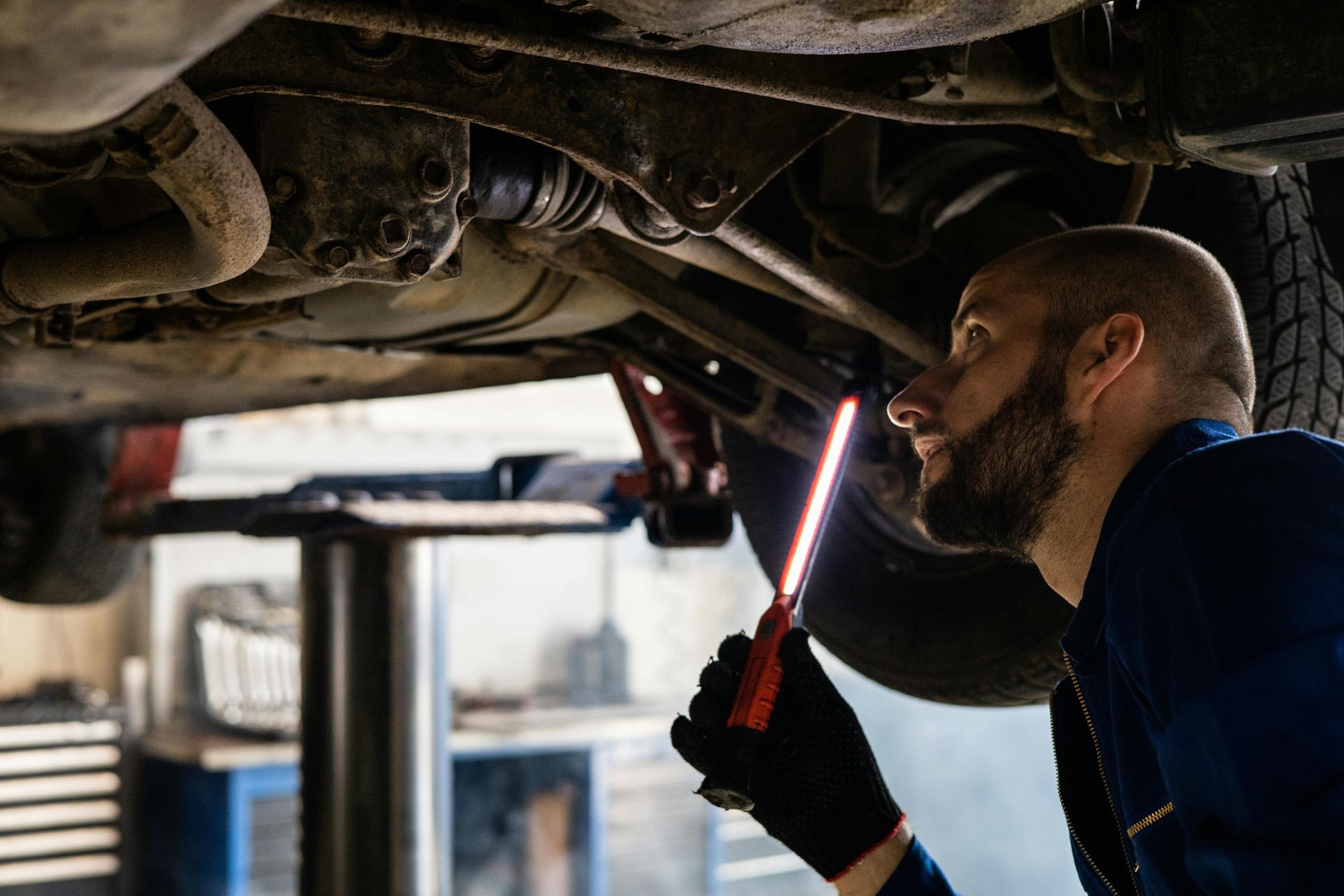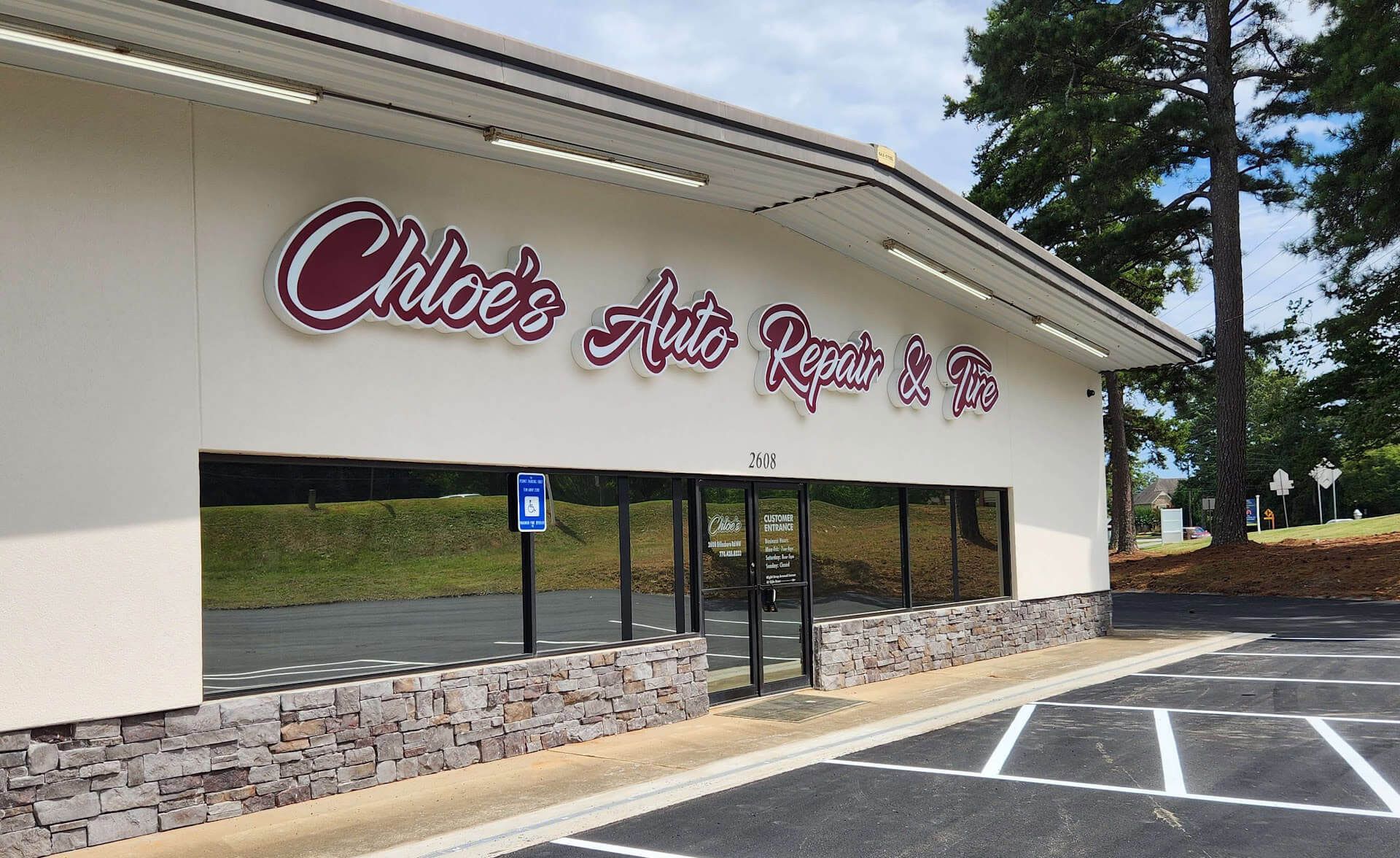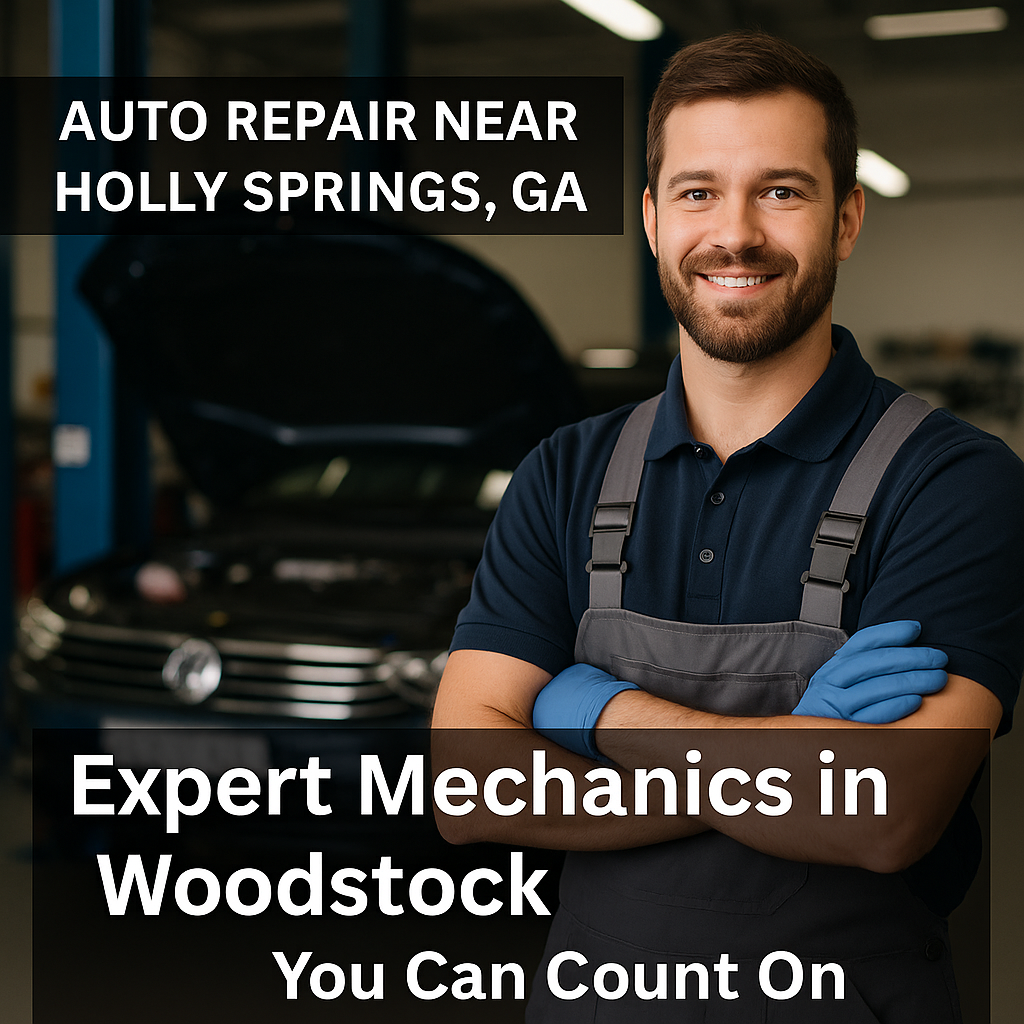How To Extend The Life of Your Engine

Your car’s engine is the heart of your vehicle, and keeping it in top condition is essential for ensuring your car runs smoothly for years to come. At Chloe’s Auto Repair, we’ve seen it all—from engines that purr like kittens to those that sputter and struggle. The good news? With proper care and maintenance, you can significantly extend the life of your engine and avoid costly repairs down the road. In this article, we’ll share expert tips to help you keep your engine running strong.
1. Regular Oil Changes: The Lifeline of Your Engine
Oil is often referred to as the lifeblood of your engine, and for good reason. It lubricates moving parts, reduces friction, and helps dissipate heat. Over time, however, oil breaks down and becomes contaminated with dirt and debris, losing its effectiveness.
Dirty or old oil can lead to increased friction, overheating, and premature wear on engine components. Neglecting oil changes can result in sludge buildup, which can clog critical passages and reduce engine efficiency. Follow your manufacturer’s recommended oil change intervals (typically every 3,000 to 7,500 miles, depending on your vehicle and oil type. Use high-quality oil and filters to ensure optimal performance.
Consider synthetic oil for better protection and longevity, especially in extreme temperatures.
2. Keep Your Cooling System in Check
Your engine operates at high temperatures, and the cooling system is responsible for preventing overheating. A well-maintained cooling system ensures your engine stays within its optimal temperature range.
Overheating can cause severe engine damage, including warped cylinder heads, blown gaskets, and even complete engine failure. Coolant breaks down over time and loses its ability to regulate temperature effectively. Check coolant levels regularly and top off as needed.
Flush and replace coolant according to your vehicle’s maintenance schedule (usually every 30,000 to 50,000 miles. Inspect hoses, belts, and the radiator for leaks or wear and replace them as necessary.
3. Replace Air Filters Regularly
Your engine needs a steady supply of clean air to operate efficiently. The air filter prevents dirt, dust, and debris from entering the engine, but over time, it can become clogged. A dirty air filter restricts airflow, reducing engine performance and fuel efficiency.
Contaminants that bypass a clogged filter can cause damage to internal engine components. Inspect your air filter every 12,000 to 15,000 miles and replace it if it’s dirty. If you frequently drive in dusty or polluted environments, check and replace the filter more often.
4. Use High-Quality Fuel
The fuel you use directly impacts your engine’s performance and longevity. Low-quality fuel can lead to carbon buildup, reduced efficiency, and even engine knocking. High-quality fuel contains detergents that help keep your fuel system clean. Poor-quality fuel can leave deposits on fuel injectors and valves, affecting performance.
Stick to reputable gas stations and use the fuel grade recommended by your vehicle’s manufacturer. Consider using fuel additives periodically to clean the fuel system and remove deposits.
5. Don’t Ignore Warning Signs
Your car often gives you early warning signs when something is wrong. Ignoring these signs can lead to more significant problems and costly repairs. Issues like strange noises, warning lights, or changes in performance can indicate underlying engine problems. Addressing problems early can prevent them from escalating into major repairs. Pay attention to your car’s behavior and address any unusual symptoms promptly.
Bring your vehicle to Chloe’s Auto Repair for a professional diagnosis if you notice anything out of the ordinary.
6. Maintain Proper Engine Timing
The timing belt or chain ensures that your engine’s valves open and close at the correct intervals. If it fails, it can cause catastrophic engine damage. A broken timing belt can cause valves to collide with pistons, leading to expensive repairs. Timing belts and chains wear out over time and need to be replaced.
Our Recommendation:
Follow your manufacturer’s recommended timing belt replacement interval (usually every 60,000 to 100,000 miles. Have your timing system inspected regularly, especially if you hear unusual noises or notice performance issues.
7. Drive Responsibly
How you drive has a significant impact on your engine’s health. Aggressive driving, frequent short trips, and overloading your vehicle can all take a toll on your engine. Aggressive driving (rapid acceleration, hard braking) increases wear and tear on engine components. Short trips prevent your engine from reaching its optimal operating temperature, leading to moisture buildup and increased wear.
Our Recommendation:
Drive smoothly and avoid sudden acceleration or braking. Combine short trips whenever possible to allow your engine to warm up fully. Avoid overloading your vehicle, as excess weight puts additional strain on the engine.
8. Keep Your Engine Clean
A clean engine not only looks good but also runs better. Dirt and grime can trap heat and cause components to wear out faster. Periodically clean your engine bay using a degreaser and a gentle spray of water (avoid direct spraying of electrical components. Consider professional engine cleaning services at Chloe’s Auto Repair for a thorough job.
9. Address Leaks Promptly
Fluid leaks are a common issue that can lead to engine damage if left unchecked. Whether it’s oil, coolant, or transmission fluid, leaks should be addressed immediately.
Low fluid levels can cause overheating, increased friction, and component failure. Leaks can also indicate worn seals or gaskets that need replacement. Regularly check your driveway or parking spot for signs of leaks. Inspect fluid levels and top off as needed. Bring your vehicle to Chloe’s Auto Repair to diagnose and repair leaks promptly.
10. Schedule Regular Maintenance
Routine maintenance is the key to a long-lasting engine. A professional inspection can catch potential issues before they become major problems. Regular maintenance ensures that all engine components are functioning correctly. Professional technicians can identify and address issues that may not be obvious to the average driver.
Follow your vehicle’s recommended maintenance schedule. Bring your car to Chloe’s Auto Repair for routine check-ups, including oil changes, fluid checks, and system inspections.
Final Thoughts
Your engine is a complex and vital component of your vehicle, and taking care of it doesn’t have to be complicated. By following these tips and staying proactive about maintenance, you can extend the life of your engine and enjoy a smoother, more reliable driving experience.
At Chloe’s Auto Repair, we’re here to help you keep your engine—and your entire vehicle—in peak condition. Whether you need a routine oil change, a cooling system flush, or a diagnostic check, our team of experienced technicians is ready to provide top-notch service. Schedule an appointment with us today, and let’s keep your engine running strong for years to come!
Trust Chloe's Auto Repair in North Metro Atlanta for expert brake service. Enhance safety and performance. Visit us today for reliable, expert care!
Explore expert oil change tips at Chloe's Auto Repair in North Metro Atlanta. Enhance vehicle performance today. Schedule an online appointment now.
Stay cool with top-notch AC repair at Chloe's Auto Repair in North Metro Atlanta. Expert service for all auto needs. Schedule an online appointment now!
Expert tire and wheel alignment at Chloe's Auto Repair, North Metro Atlanta. Improve safety and performance. Visit us today for comprehensive auto care!
Expert engine repair & diagnostics at Chloe's Auto Repair, North Metro Atlanta. Trust our skilled team for quality service. Visit us today!
Expert brake repair in North Metro Atlanta, GA by Chloe's Auto Repair and Tire Shop. Certified service for rotors & pads. Visit us for seamless performance today!
Discover expert oil change and filter services at Chloe's Auto Repair and Tire Shop in North Metro Atlanta, GA. Visit us today for top-notch auto care!

Essential Preventive Auto Maintenance Tips in North Metro Atlanta, GA | Chloe’s Auto Repair and Tire
Stay ahead of costly repairs with preventive maintenance from Chloe’s Auto Repair in North Metro Atlanta, GA. Expert service & local care. Call us today!

Wheel alignment is an essential yet often overlooked aspect of vehicle maintenance. It's easy to focus on more visible issues like oil changes, tire rotations, or brake pads, but the alignment of your vehicle’s wheels plays a critical role in the overall performance, safety, and longevity of your car. When your wheels are properly aligned, your vehicle operates efficiently, reduces unnecessary wear, and ensures a smooth and safe driving experience. Let’s explore the importance of wheel alignment for your vehicle’s health in greater detail, from its impact on tire longevity to fuel efficiency, handling, and safety. What is Wheel Alignment? Wheel alignment refers to the adjustment of the angles of the wheels so that they are set to the vehicle manufacturer’s specifications. Proper alignment involves adjusting the suspension components rather than the wheels or tires themselves. The suspension system connects the vehicle to the wheels, and these adjustments can ensure that the wheels are in the optimal position relative to the vehicle's frame. The three primary angles involved in wheel alignment are: Camber: This refers to the tilt of the wheels in relation to the vertical axis of the vehicle. If the top of the wheel tilts inward, it’s called negative camber, while outward tilt is known as positive camber. Incorrect camber can cause uneven tire wear, affecting handling and performance. Toe: This refers to the angle at which the tires point inward or outward when viewed from above. If the wheels point toward each other, it's called "toe-in," and if they point away, it's known as "toe-out." Improper toe settings can lead to excessive tire wear and poor handling. Caster: This is the angle of the steering axis when viewed from the side of the vehicle. A positive caster helps maintain stability at high speeds, while a negative caster can make the vehicle feel unstable or “wandering.” Regularly checking and adjusting these angles is crucial for your vehicle’s health. Now let’s dive deeper into the specific reasons why wheel alignment is so important. 1. Extended Tire Life One of the most noticeable effects of improper wheel alignment is accelerated tire wear. When your wheels are out of alignment, your tires can wear unevenly. For example, if the toe is set incorrectly, it can cause the inside or outside edges of the tires to wear down faster than the center. Similarly, misaligned camber angles may lead to excessive wear on one side of the tire, rendering it less effective and potentially unsafe much sooner than it should be. By maintaining proper wheel alignment, your tires will wear evenly and last longer, ultimately saving you money on tire replacements. In addition, properly aligned tires promote better traction, reducing the likelihood of slipping or hydroplaning during wet conditions. 2. Improved Fuel Efficiency Did you know that improper wheel alignment can lead to decreased fuel efficiency? When your wheels are out of alignment, your tires can create resistance against the road. This extra friction forces the engine to work harder to propel the vehicle forward, leading to higher fuel consumption. The misalignment causes the vehicle to drag, which in turn reduces gas mileage. By aligning your wheels, you reduce this unnecessary friction, allowing your vehicle to move more smoothly, consume less fuel, and save you money at the gas pump. It’s a simple adjustment that can have long-term economic benefits and environmental advantages. 3. Enhanced Vehicle Handling Proper wheel alignment also contributes to the handling and overall driving experience of your vehicle. When the wheels are not aligned, it can affect the vehicle’s ability to drive straight. Misalignment might cause the car to pull to one side or make the steering wheel feel off-center or unresponsive. This can make driving uncomfortable and even unsafe, particularly at higher speeds or when making turns. Correct wheel alignment ensures that the steering wheel responds as expected, and the vehicle drives straight and true. This stability is crucial for your safety, especially in emergency situations that require quick and precise steering inputs. Whether you're navigating city streets, cruising on highways, or taking tight turns, proper alignment makes handling much more predictable and comfortable. 4. Safety Benefits A vehicle with misaligned wheels can be dangerous, especially if the alignment issues lead to uneven braking or handling problems. For example, a misaligned wheel can make the vehicle pull to one side during braking, which may result in longer stopping distances or difficulty maintaining control of the car, especially in hazardous road conditions. This can significantly increase the risk of accidents, particularly when driving at high speeds or in adverse weather. Proper wheel alignment ensures that your car handles predictably and brakes evenly. This stability can help prevent accidents and ensure that your vehicle operates safely under various conditions. It’s particularly important for those who frequently drive in challenging conditions, such as on wet roads, icy streets, or uneven terrains. 5. Less Strain on Suspension Components When your vehicle’s wheels are misaligned, the suspension system bears the extra load caused by the improper angles of the tires. This additional stress can cause the suspension components, such as shocks and struts, to wear out more quickly, leading to costly repairs. Over time, the vehicle may begin to experience issues such as poor ride quality, excessive vibration, and reduced handling capabilities. Regular wheel alignment checks and adjustments can help prevent undue stress on your vehicle's suspension system, prolonging its life and ensuring that it functions as intended. This not only saves money on repairs but also helps maintain a smooth, comfortable ride for you and your passengers. 6. Maintaining Your Vehicle’s Value Properly maintaining your vehicle’s health, including its alignment, helps preserve its value. Potential buyers are often concerned with the condition of the vehicle’s tires, suspension, and overall driving performance. A car that has a history of regular wheel alignments will likely appeal to buyers, as it suggests that the vehicle has been well-maintained and cared for. Conversely, a vehicle with uneven tire wear or poor handling might be less attractive to a buyer, even if the vehicle is otherwise in good condition. By keeping your vehicle aligned, you’re not just taking care of its performance, but also protecting its resale or trade-in value. 7. Signs That Your Vehicle Needs Wheel Alignment If you’re unsure whether your vehicle needs a wheel alignment, there are several warning signs to look out for: Uneven or excessive tire wear: Check your tires for wear patterns. If one side is more worn than the other, it's a sign that your wheels may be out of alignment. Pulling to one side: If your vehicle drifts to the left or right even when you’re driving on a straight, level road, your alignment might be off. Steering wheel vibration or misalignment: If your steering wheel shakes or feels off-center, it's time to have your wheel alignment checked. Squealing tires: If your tires make squealing noises, it could be due to improper alignment or excessive friction from misaligned wheels. Conclusion Wheel alignment is a critical component of your vehicle's overall health and well-being. It affects tire longevity, fuel efficiency, handling, safety, and even the lifespan of your suspension system. Regular alignment checks can prevent costly repairs, reduce fuel consumption, improve driving comfort, and ensure that your car remains in optimal condition. To keep your vehicle performing at its best, it’s advisable to have your wheel alignment checked periodically, especially if you notice any of the warning signs mentioned above. Most experts recommend checking your alignment at least once a year or whenever you replace your tires. By making wheel alignment a priority, you’ll not only extend the life of your vehicle but also ensure a safer, more comfortable driving experience for you and your passengers.





